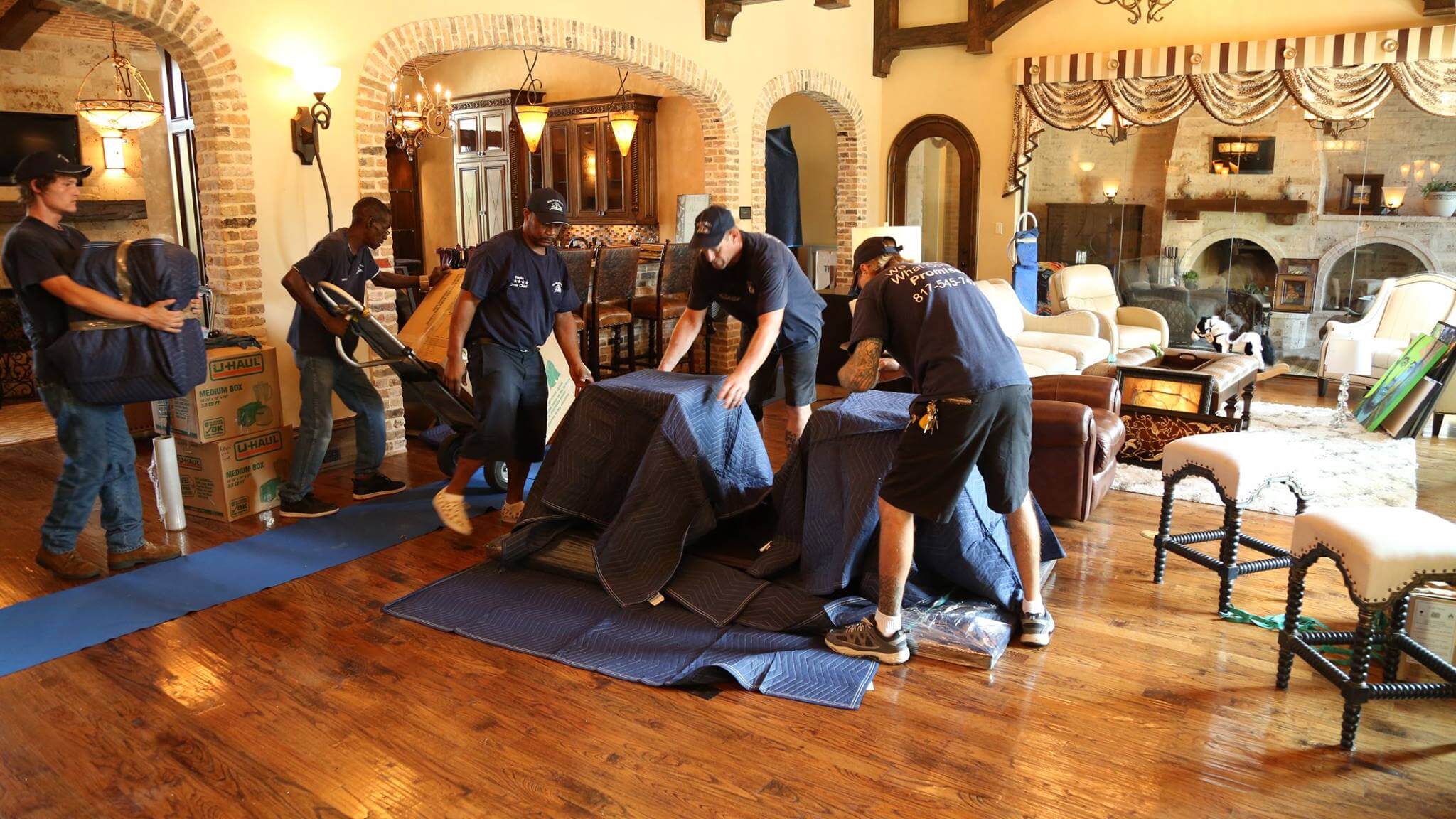
You may assume clothes are the easiest thing to pack, and you might be right. Well, they’re certainly the lightest things to pack, and there’s really no risk of breakage like there is with small appliances, glassware and photo frames, but still – clothing needs to be packed correctly in order to make the most use of space.
Once you open up your dresser or closet, it may hit you just how much clothing, shoes and accessories you actually have. How will you get it all packed in time? How will you use your space efficiently? How will you pack those designer clothes and fancy shoes that can’t just be thrown into a box? Well, we’re here to let you in on some clothing packing secrets.
Purge What You Don’t Need
First and foremost, you don’t need to take what you won’t wear in the new place. That includes:
- Seasonal clothing that won’t have a place in the new region. If you’re moving from a snowy climate to a hot one like Fort Worth, you can get rid of most of your cold weather gear. Keep a few pieces just in case.
- Outdated clothing. If the last time you wore that skirt was when the 80s ruled the land, it’s safe to say you can let go of it now.
- Clothes that you no longer fit into: Sure, everyone keeps those skinny jeans around for inspiration to lose weight, but does this really work? Get rid of clothing that doesn’t fit and invest in new clothing that complements your figure once in the new digs.
- Damaged clothing: Why are you keeping that stained shirt, old baby clothes or shoes with a hole in them? Dispose of them before you spend money to transport damaged goods.
Group Your Clothing by Type, Season, Etc.
With the clothing that made the cut, you should group it by:
- Material – Similar fabrics will have similar packing demands, so group by natural fabrics (like cotton) which are susceptible to wrinkling; silks and leathers which are very delicate and need TLC when packing; knits and woolen clothes which tend to take up a lot of space; and synthetics and polyesters which are the most versatile and can be packed with the least amount of care.
- Season – This allows you to pre-pack out-of-season items clothing first, followed at the end by current-season clothing, which you will need to leave in your closets till the last minute.
- Type – Pack similar items together, such as shirts with shirts, pants with pants, and dresses with dresses.
- Purpose – Your everyday, comfy clothing should be packed together, separate from your formal wear, work wear and outdoor wear, for example.
Best Way to Pack Clothes
The easiest thing to do for the stuff hanging in your closets is to pack them all as-is, while still on the hangers. Here’s how you can do it:
- Wardrobe boxes: These are tall boxes with built-in hanging racks at the top, designed to keep your best clothing wrinkle-free and protected from dirt, dust, and damage.
- Garment bags: Designed to transport clothes on hangers, use these for transporting fine clothing items such as professional work wear, gowns and suits.
- Trash bags: Trash bags save you lots of time and effort, and can be used for the majority of your clothing. It’s best to use drawstring trash bags, cutting a hole in the middle of the bottom to get your hangers through. Pull the drawstring to secure the clothing, then wrap a twist tie around them all to keep them together.
- Plastic wrap or sheets: Just wrap the film around a group of clothes on hangers and you’re good to go.
Boxes
If packing clothing in boxes, heed these tips:
- Use a clean, sturdy, medium-size cardboard box
- Line it with packing paper
- Fold your clothes flat and place them neatly them in the box, putting heavier clothing on the bottom.
- Cover the clothes with packing paper
- Close, seal and label the box
Suitcases
Why not make use of suitcases you already have? This is a great option for transporting delicate clothes as well as heavier clothes, because you can easily wheel the suitcases instead of picking them up. You can either fold your garments in the traditional way or roll them for additional space savings. In fact, rolled clothing items take 50% less space than their folded counterparts.
Duffel Bags
The best way to pack a duffel bag is to roll your clothes so that they are parallel to the longer side.
Vacuum Bags
If you’re really tight on space and have a lot of clothing, use vacuum bags, which suck out all the air so you’re just left with the clothing inside. This option is best when compressing soft, voluminous items such as bedding and clothing.
Helpful Considerations
Here are some more helpful tips:
- Clean and thoroughly dry your clothing before you pack. Any damp areas can breed mold, and you don’t want that nasty surprise when unpacking!
- If you won’t be unpacking the clothing for quite some time, place insect repellents, odor balls and moth balls amongst your clothes.
- Pack hats and accessories separately. Place hats in separate boxes, stacking similar hats together. Unique hats that can’t be stacked should be stuffed with packing paper to retain their shape. Use small boxes to pack accessories, and use padding inside for extra protection.
- You can use clean rags, older clothes and sheets as wrapping and padding materials. Use them to line boxes, fill gaps in containers, and stuff in hollow items such as hats, vases and more.
Contact Olde World Movers
Now that you have your packing game down pat, it’s time to call us for a free quote on your move at 972-665-6910. We can get your clothing and all other items moved efficiently and quickly.



